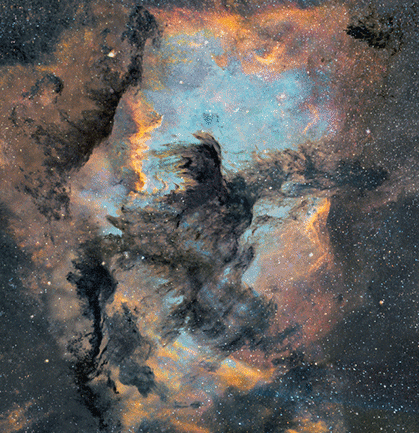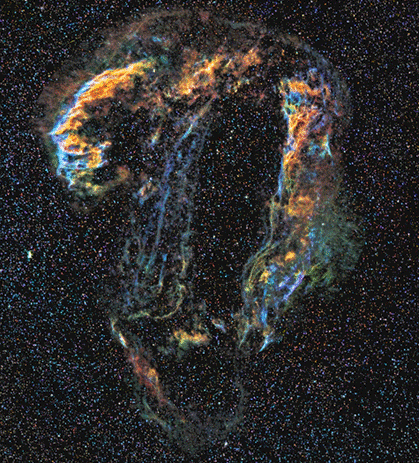But a series of animations aim to mimic that experience as closely as possible by letting you fly around and through these giant regions of dust and gas.
The result is a stunning array of cosmic objects, from the Lagoon Nebula to the Bubble Nebula, revealed in glorious 3D.
 |
| A Finnish astrophotographer has created amazing 3D animations of nebulae. Shown here is Melotte 15, an open cluster of stars in the Heart Nebula about 7,500 light-years away |
- The animations were created by Finnish astrophotographer J-P Metsävainio.
- He created all of them himself using an observatory in the city of Oulu in Finland.
- Using known distances to stars, and some guesswork, he creates the estimations of how the cosmic regions might look in 3D.
‘My 3D experiments are a mixture of science and an artistic impression,’ Metsävainio tells MailOnline.
‘I collect distance and other information before I do my 3D conversion.’
To work out how a nebula might look in three dimensions Metsävainio looks up the distances to known stars, so that they can be placed at the correct location.
And if the distance to the nebula is known, he fine tunes the distance to the stars so that the right amount of stars are in front and behind the object.
‘I use a “rule of thumb” method for stars: brighter is closer,’ he explains.
‘But if a real distance is known, I try to use it.’
 |
| In each can be seen the structure, shape and features of the objects. Shown here is the full Heart Nebula, also called IC 1805, in three dimensions |
 |
| The Pelican Nebula with the North America Nebula in the constellation Cygnus is seen here |
By looking carefully at the structures in nebulae he says their shape can be discerned, with most star-forming regions like these having similar structures.
For instance most nebulae have a group of newly born young stars as an open cluster inside the nebula.
The stellar wind from these says blows the gas away around the cluster, forming a sort of ‘hole’ around the centre.
Pillar-like formations of dust and gas also point to a source of stellar wind.
He continues: ‘Astronomical imaging is a passion of mine!
‘All aspects of art, science and technique are needed for a good photo.
‘Even though my images fulfil rules of scientific imaging, this is an art form and a self-expression channel for me.
‘There is so much beauty around us, hidden from our limited senses, and I enjoy being able to reveal it. Astro imaging is a form of nature imaging.’
He adds that the 3D animations help to show that astronomical objects are not like paintings in canvas but real three-dimensional forms, floating in three-dimensional space.

No comments:
Post a Comment